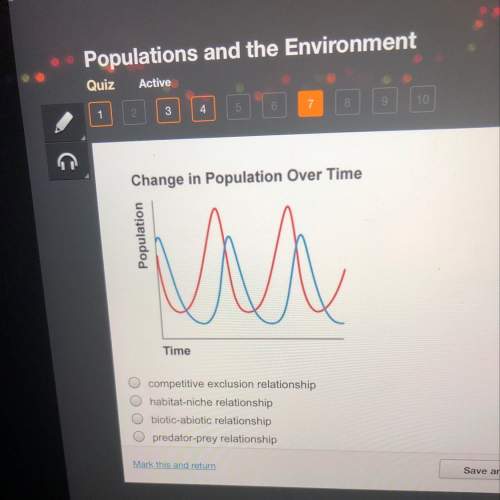
Biology, 07.11.2019 00:31 natalie1755
In systemic tissue fluids, the enzyme carbonic anhydrase catalyzes the reaction co2 + h2o → h2co3 (which then can dissociate into h+ and in fact, co2 released from cells is converted to hco3- ions and travels in that form in the bloodstream. hco3- is reconverted to co2 + h2o in the pulmonary capillaries by the same enzyme, and there the co2 is exhaled. how is it possible for the same enzyme to catalyze reverse reactions?
a. there must be two forms of carbonic anhydrase. one form catalyzes the forward reaction co2 + h2o → h2co3 and the other catalyzes the reverse reaction h2co3 → co2 + h2o
b. the direction of a reversible reaction is influenced by the concentrations of reactants and products. in pulmonary circulation, the low co2 concentration favors the formation of co2 and h2o
c. the lungs contain an allosteric inhibitor that prevents the formation of carbonic acid

Answers: 1


Other questions on the subject: Biology

Biology, 22.06.2019 01:00, nahimo
In which terrestrial biome can you find trees that produce cones instead of flowers and needles instead of leaves? have trees that produce cones instead of flowers and needles instead of leaves. the latitudes in this biome have evenly distributed precipitation throughout the year. is it high or low
Answers: 2

Biology, 22.06.2019 02:00, sativataurus
The phylogenetic tree illustrates the relationship between humans and our closest living relatives. the tree was based on biochemical comparisons, including dna and amino acid sequences. according to the biomolecular data, we could infer that a) the four organisms do not have a common ancestor. b) humans are more closely related to chimps than any other apes. c) chimps are more closely related to gorillas than they are to humans. eliminate d) there is no evidence if any relationship between the four branches on the tree.
Answers: 3

Biology, 22.06.2019 07:10, knikni06
He did not infringe upon the policy making powers that he felt the constitution gave congress. but the determination of foreign policy became preponderantly a presidential concern. when the french revolution led to a major war between france and england, washington refused to accept entirely the recommendations of either his secretary of state thomas jefferson, who was pro-french, or his secretary of the treasury alexander hamilton, who was pro-british. rather, he insisted upon a neutral course until the united states could grow stronger. which provides the best objective summary of this excerpt? president washington made a good choice when he decided not to accept the recommendations of his advisors and instead insisted that the united states stay neutral during the war between france and england as president, washington believed that the united states should remain neutral in foreign policy even though he had advisors who recommended that he take sides during the war between france and england. washington did not make policy decisions during his presidency because he did not want to interfere with the policy-making powers that the constitution gave congress. washington refused to accept entirely the recommendations of either his secretary of state thomas jefferson, who was pro-french, or his secretary of the treasury alexander hamilton, who was pro-britis
Answers: 3

Biology, 22.06.2019 07:30, richardharding
The illustration shown is an ovum, a female sex cell. a mutation in this cell may be passed to the woman’s offspring during a) birth. b) mitosis. c) dna replication. d) sexual reproduction
Answers: 1
You know the right answer?
In systemic tissue fluids, the enzyme carbonic anhydrase catalyzes the reaction co2 + h2o → h2co3 (w...
Questions in other subjects:

English, 14.10.2019 19:20







Biology, 14.10.2019 19:20





